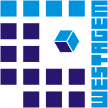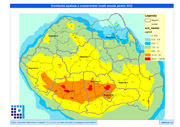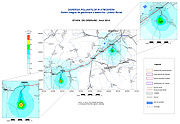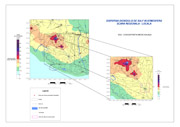
An air quality services company!
Air Quality
Air Pollutants Dispersion Modeling
WESTAGEM team includes very experienced experts in dispersion modeling which are able to assess impacts of pollutants from different types of emission sources.
This experience consists of application of a wide range of dispersion models recommended at national or international level:
- US EPA models: AERMOD, ISC3, CALPUFF, INPUFF, CALINE3 (4), ALOHA, CDM, etc.
- EU models: OML (NERI model), OSPM (NERI), RIMPUFF(NERI) EPISODE (NILU)
- Other international models: TAPM (CSIRO, Australia).
The WESTAGEM expertise and experience involve carefully analysis in selecting the appropriate dispersion model depending on each project need. The terrain conditions, the availability and refinement of necessary input data (meteorological and emissions data) are aspects always taken in considerations before model selection.
These approaches derived from the research capabilities of WESTAGEM staff that has also been involved in dispersion model evaluations and in model inter-comparison studies, which indicated the performance of different models under different conditions.
Air Quality Impact Analysis
Air quality impact analysis mainly combines the two well know approaches: measurement and modeling.
Modeling represents the most powerful tool in air quality impact analysis that may lead to sophisticated results by achieving lower costs.
WESTAGEM expertise includes air quality impact assessment studies for a variety of industrial sectors (mining, chemical or petrochemical, pharmaceutical, large combustion plant, cement, steel and nonferrous industries, etc.).
Air Quality Management and Planning
Development of air quality programs involves, at the first stages, a deep and complete assessment of the actual state of the air quality in the areas, through a consistent emission inventory, modeling and air quality data analysis. Based on the primarily analysis further scenarios should be develop in order to establish reduction measures for the identified sources responsible for poor air quality.
WESTAGEM experts have been involved in the project team that designed the air quality management programs at the local levels during the PHARE project: Development of an Air Quality Management Program for the Romanian Region along the Bulgarian Border on the Lower Danube (PHARE CBC 2003, EuropeAid/119604/D/SV/RO).
 English
English Romana
Romana


